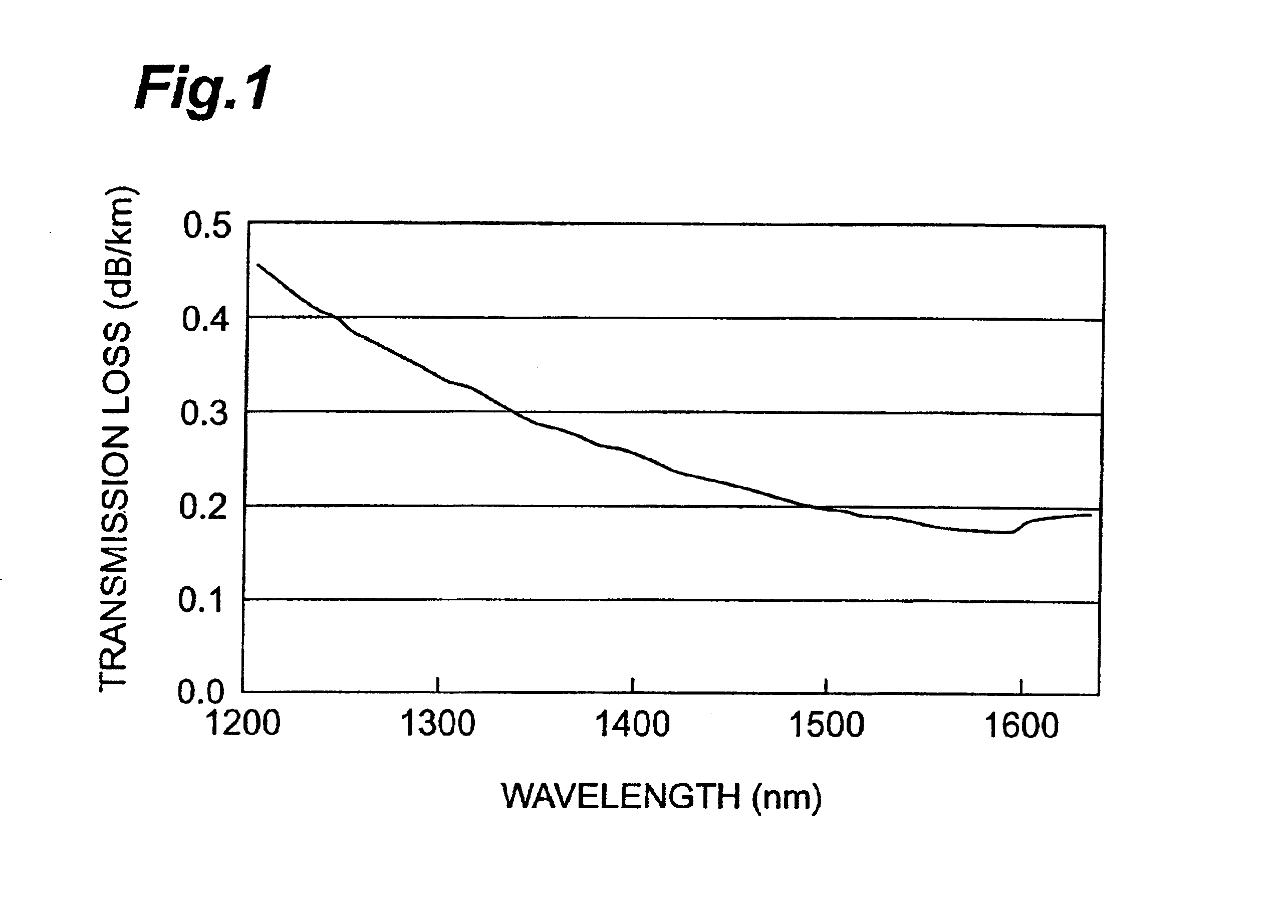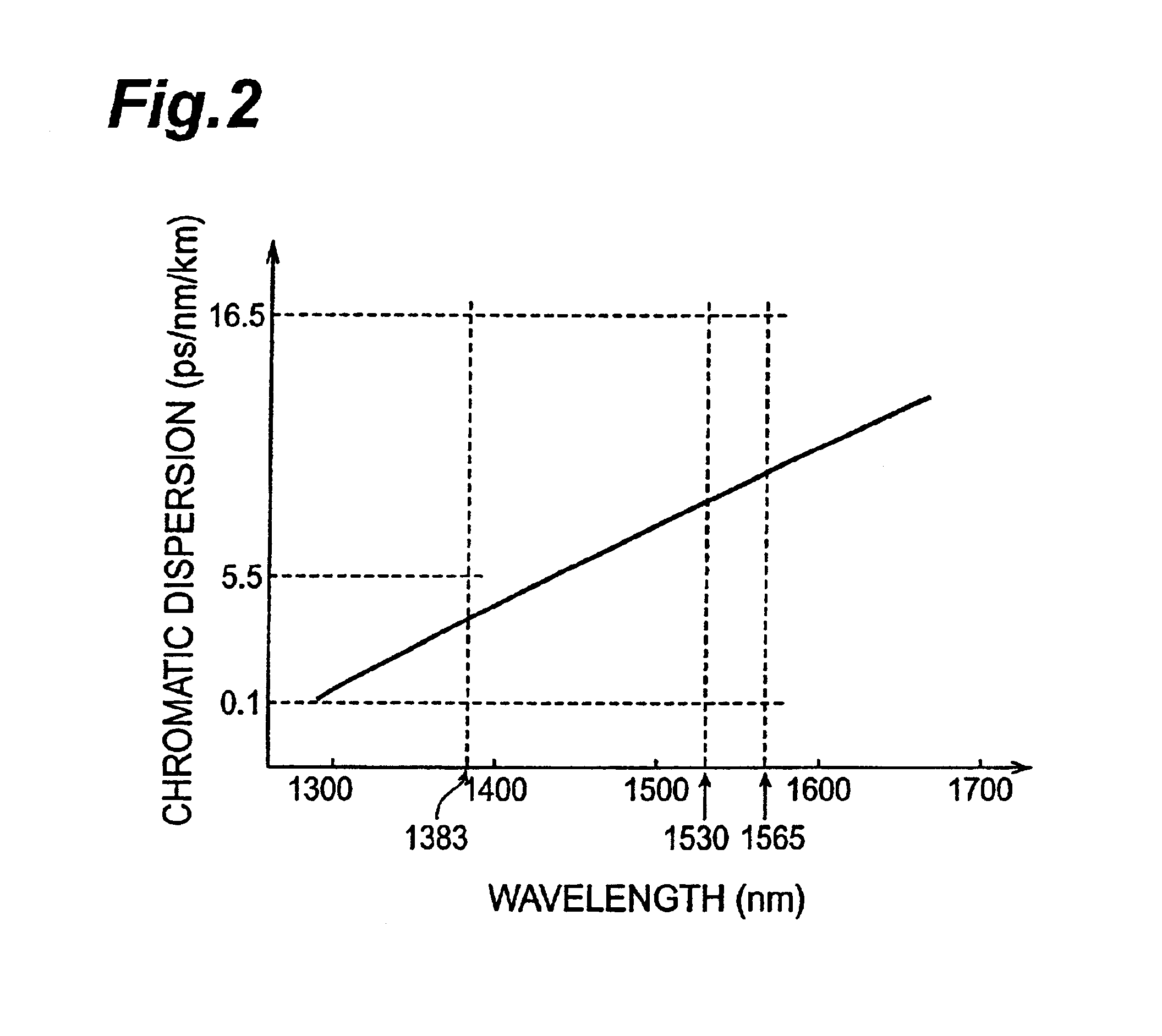Optical fiber
a technology of optical fiber and transmission channel, applied in the field of optical fiber, can solve the problems of difficult to realize wdm transmission using the whole wavelength range of 1300 nm to 1625 nm as a signal wavelength band, difficult for conventional optical fibers to realize wdm transmission using wavelength, etc., to achieve the effect of reducing the transmission loss of optical fiber at a wavelength of 1383 nm and the reduction of the transmission loss of optical fiber at a wavelength of 1383
- Summary
- Abstract
- Description
- Claims
- Application Information
AI Technical Summary
Benefits of technology
Problems solved by technology
Method used
Image
Examples
Embodiment Construction
In the following, embodiments of the optical fiber according to the present invention will be explained with reference to FIGS. 1, 2, 3A, 3B, and 4. In the explanation of the drawings, constituents identical to each other will be referred to with numerals or letters identical to each other without repeating their overlapping descriptions.
By setting the cutoff wavelength, transmission loss, chromatic dispersion, and dispersion slope into their respective optimal numerical ranges, the optical fiber according to the present invention has a structure suitable as a transmission line for WDM transmissions using the whole wavelength range of 1300 nm to 1625 nm as a signal wavelength band.
FIG. 1 is a graph showing the wavelength dependence of transmission loss in the optical fiber according to the present invention. As can be seen from the graph of FIG. 1, the transmission loss of the optical fiber according to the present invention is 0.4 dB / km or less at a wavelength of 1383 nm. Preferabl...
PUM
| Property | Measurement | Unit |
|---|---|---|
| length | aaaaa | aaaaa |
| cutoff wavelength | aaaaa | aaaaa |
| wavelength range | aaaaa | aaaaa |
Abstract
Description
Claims
Application Information
 Login to View More
Login to View More - Generate Ideas
- Intellectual Property
- Life Sciences
- Materials
- Tech Scout
- Unparalleled Data Quality
- Higher Quality Content
- 60% Fewer Hallucinations
Browse by: Latest US Patents, China's latest patents, Technical Efficacy Thesaurus, Application Domain, Technology Topic, Popular Technical Reports.
© 2025 PatSnap. All rights reserved.Legal|Privacy policy|Modern Slavery Act Transparency Statement|Sitemap|About US| Contact US: help@patsnap.com



